Equity Factors: Reducing Portfolio Turnover
Less Churn, More Returns?
November 2018. Reading Time: 10 Minutes. Author: Nicolas Rabener.
SUMMARY
- Portfolio turnover of equity factors can be reduced significantly by trading more conservatively
- However, reducing turnover does not necessarily increase risk-return ratios
- It all depends on transaction costs
INTRODUCTION
Turnover in business tends to be positive or negative, depending on the context. Investors prefer businesses with high turnover in inventory to similar businesses with low turnover as it implies higher revenue growth. Inversely, investors prefer low to high turnover in staff as hiring and training new people tends to be expensive.
Turnover in stock portfolios is almost always seen as negative as each transaction incurs costs. Some factor-based strategies like Momentum exhibit high turnover ratios as significant amounts of the portfolio are rotated at each rebalancing date. However, new stocks are often just slightly more attractive than the old stocks from a factor perspective, which raises the question if the transaction was necessary. In this short research note, we will investigate the impact of reducing the turnover on common equity factor portfolios across markets.
METHODOLOGY
We focus on a universe of five factors namely Value, Size, Momentum, Low Volatility and Quality in the US, European and Japanese stock markets. The factor performance is calculated by constructing long-short beta-neutral portfolios of the top and bottom 10% of stocks ranked by the factor definitions, which are in line with academic and industry standards (please see our Factor Guide for the factor definitions). Only stocks with a minimum market capitalization of $1 billion are included. Portfolios are rebalanced monthly and each transaction incurs costs of 10 basis points.
REDUCING TURNOVER IN FACTOR PORTFOLIOS
Our universe in the US contains approximately 1,800 stocks as of 2018, which implies 180 stocks in the long and 180 stocks in the short portfolio. At each monthly rebalancing date, existing stock positions that no longer fulfill the criteria are replaced with new stocks. However, if a stock only slightly changed its factor rank, e.g. moved from rank 180 to 181, it likely has the same factor potency as before. In order to reduce turnover, we therefore only replace stocks that are no longer in the top or bottom 15% of the stocks ranked by the factor. New stocks are still derived from the top and bottom 10%, we just exit slightly more conservatively.
The chart below shows the turnover per annum of common equity factors in the US, which is the lowest for the Quality and highest for the Momentum factor. We observe that applying a more conservative stock replacement methodology reduces the turnover significantly.
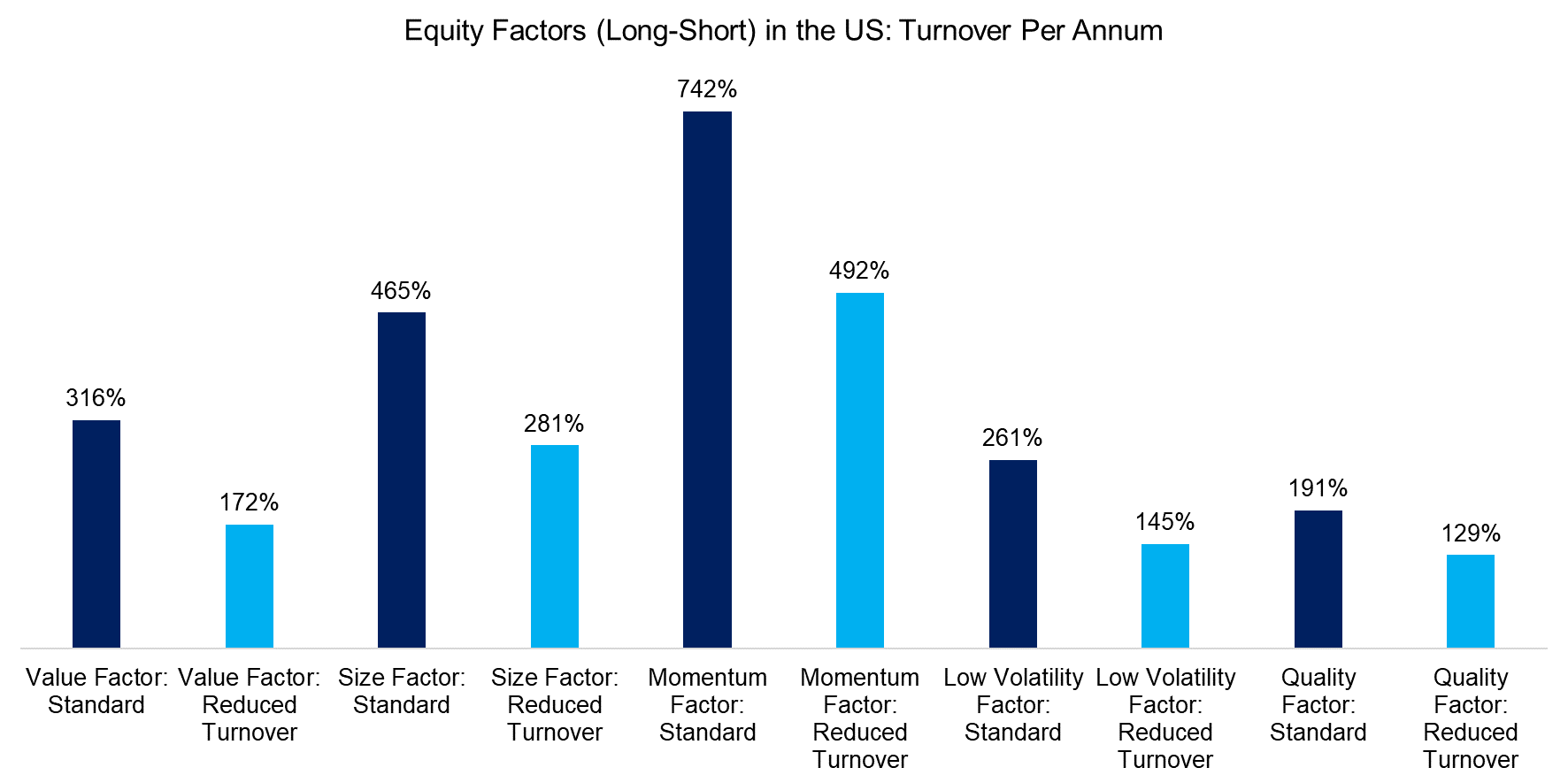
Source: FactorResearch
MOMENTUM FACTOR: REDUCING TURNOVER
Given that the long-short Momentum factor exhibits the highest turnover, we will focus on this factor for analyzing the impact of reducing the portfolio turnover on its performance. The chart below highlights that reducing the portfolio turnover generated only slightly higher returns. Given that the annual turnover was reduced from 742% to 492%, this may be somewhat surprising (read Momentum Variations).
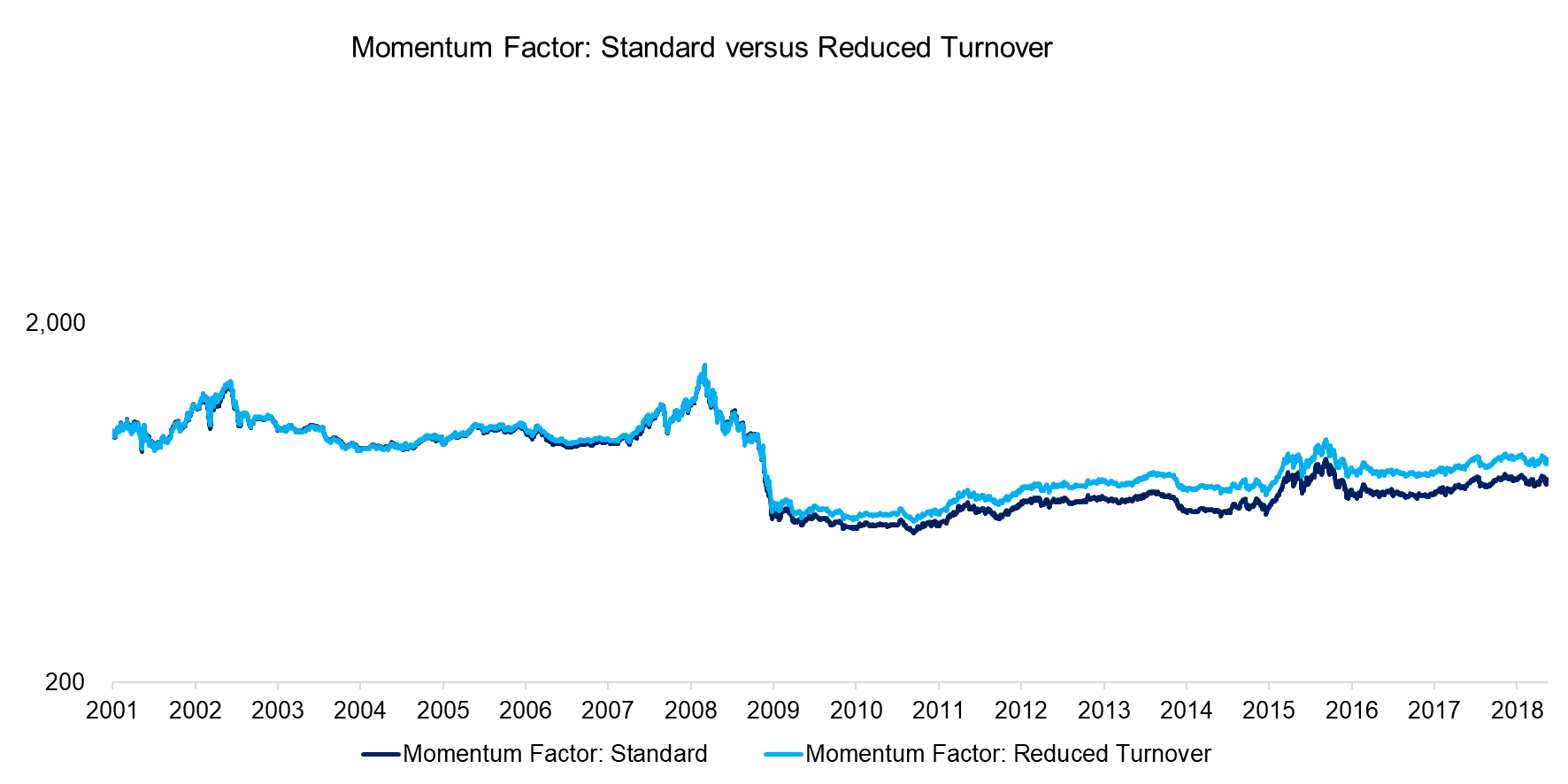
Source: FactorResearch
The lack of positive impact on the factor performance is likely explained by the transaction cost assumptions, which are 10 basis points per trade. Commissions for institutional investors are typically 2 basis points or less and market impact costs for medium to large capitalization stocks in the US range between 5 and 10 basis points. Naturally we can simulate the impact of higher transaction costs, e.g. 50 basis points, which then highlights a clear benefit of reducing portfolio turnover. The chart below highlights that a high turnover strategy like Momentum should only be pursued with low transaction costs.
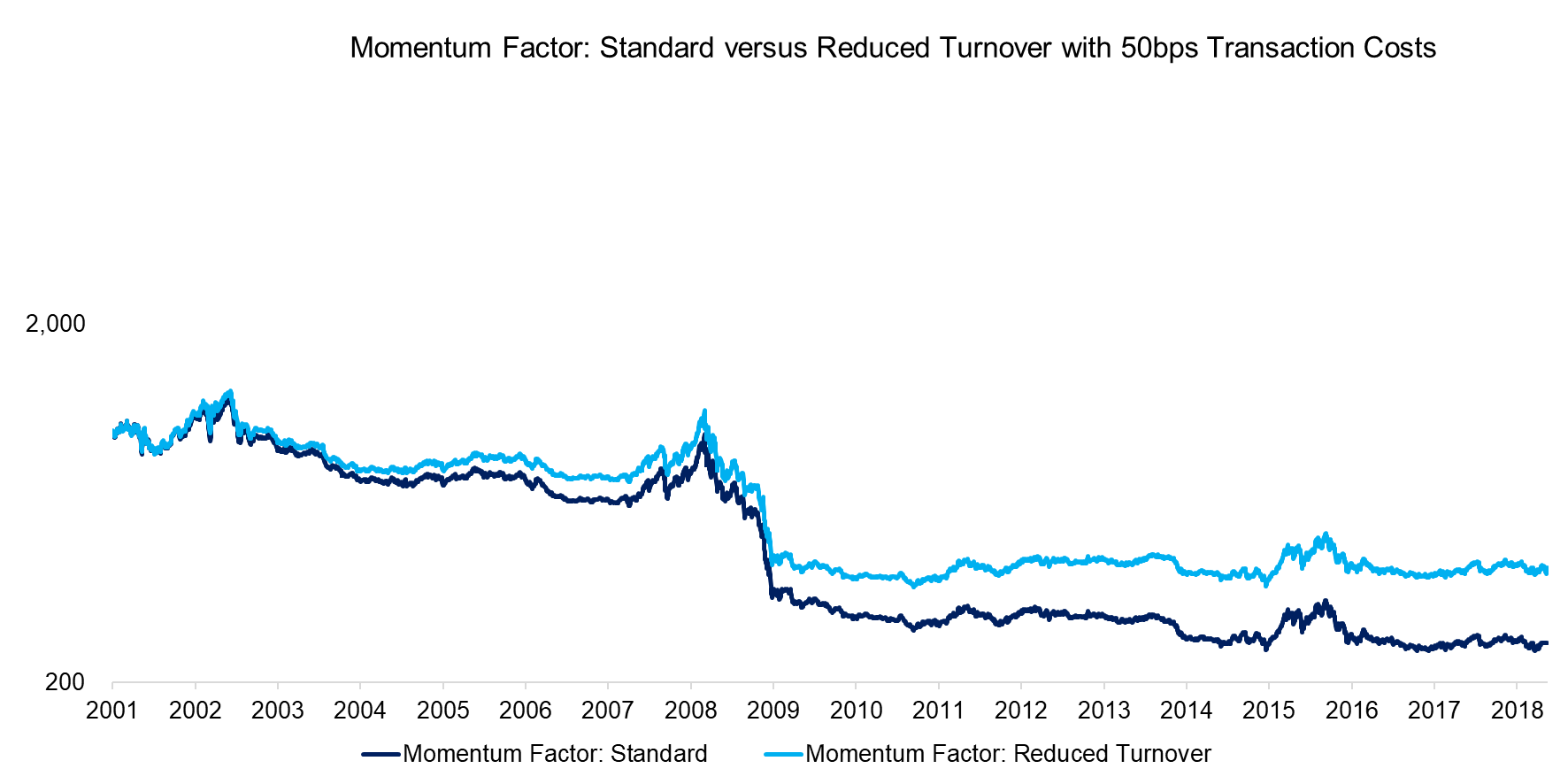
Source: FactorResearch
EQUITY FACTORS IN THE US: STANDARD VERSUS REDUCED TURNOVER
Next we expand the analysis to other common equity factors in the US and focus on the risk-return ratios in the period from 2000 to 2018. We observe that reducing the turnover was slightly accretive for the ratios of all factors, except for Value. There is no particular reason why reducing the turnover should be negative for the Value factor, so we attribute this result to randomness (try Finominal’s Security Analyzer for ETF or mutual fund analysis)).
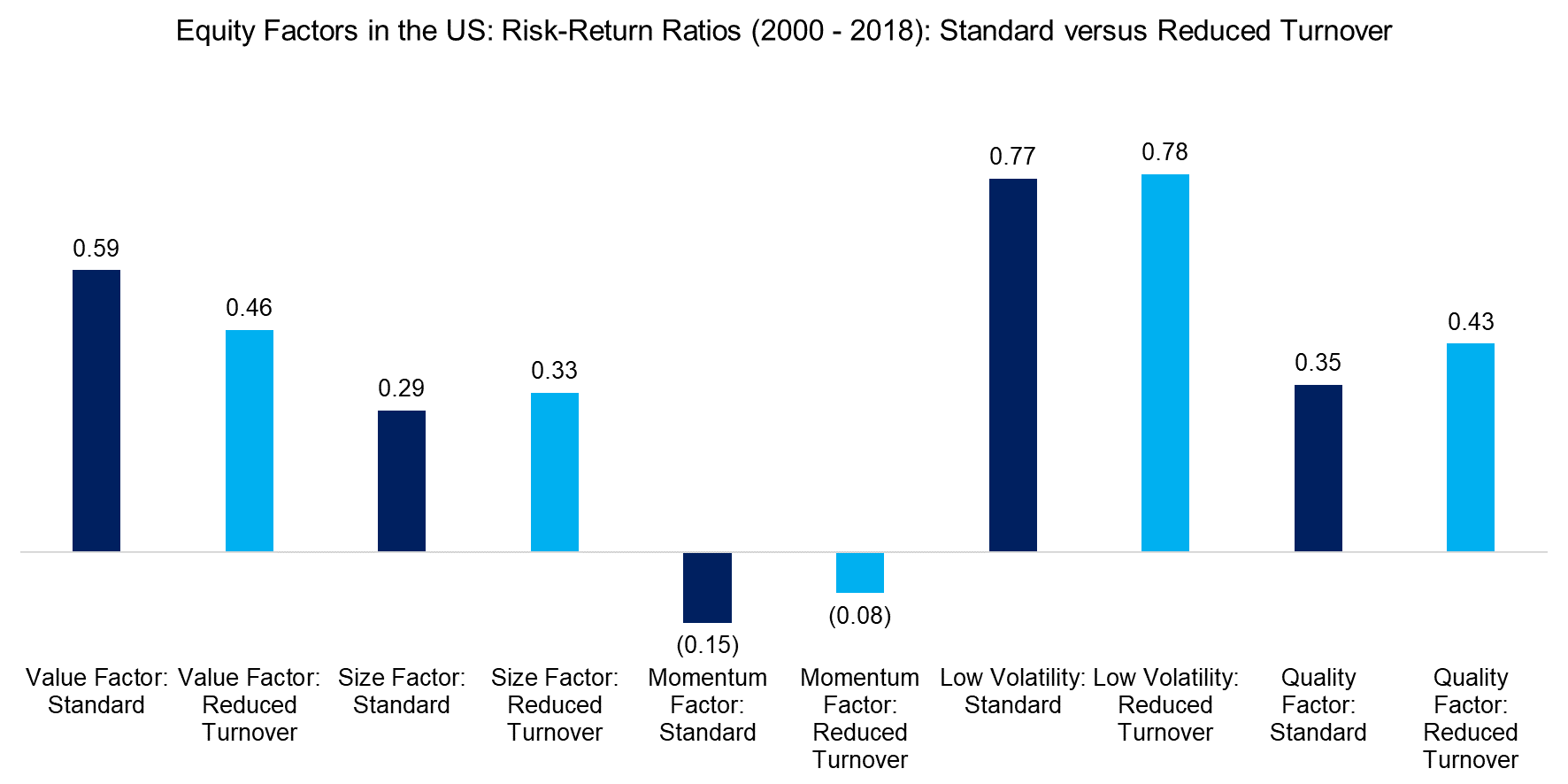
Source: FactorResearch
EQUITY FACTORS ACROSS MARKETS: STANDARD VERSUS REDUCED TURNOVER
We further expand the analysis to European and Japanese stock markets, which highlights mixed results (read Equity Factors In Japan). The average risk-return ratios across five factors are almost identical across markets. However, transaction costs are slightly higher in Europe and Japan compared to the US. Some countries, e.g. Italy, feature stamp duty, which would imply transaction costs of more than 10 basis points. Lower turnover therefore becomes more desirable.
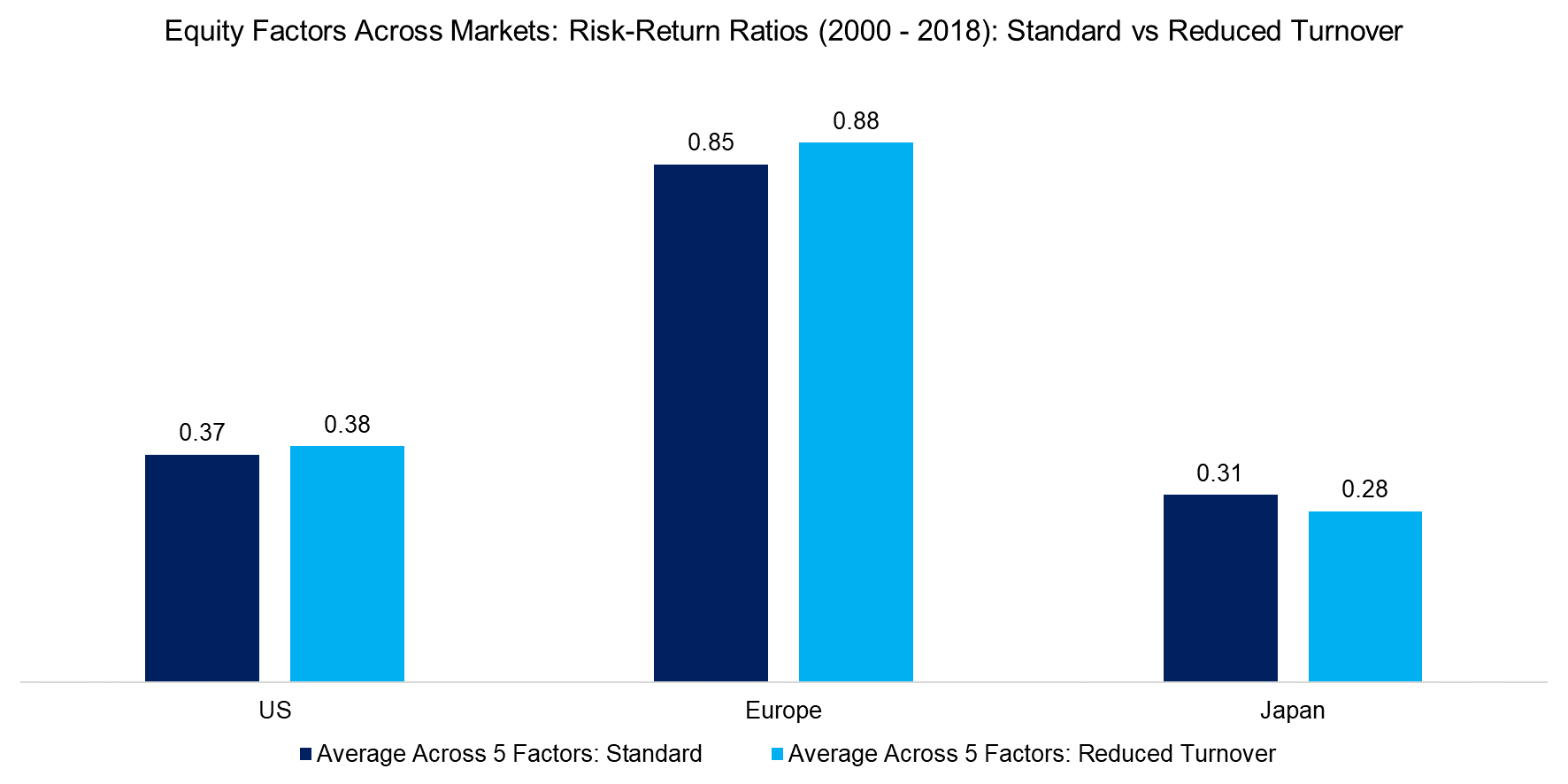
Source: FactorResearch
FURTHER THOUGHTS
This short research note highlights that reducing turnover in factor portfolio does not significantly increase risk-adjusted returns, although it strongly depends on transaction costs. Reducing turnover seems intuitively beneficial, but it also implies that new stocks are not being added to the portfolio, which may have an adverse impact on factor performance.
RELATED RESEARCH
ABOUT THE AUTHOR
Nicolas Rabener is the CEO & Founder of Finominal, which empowers professional investors with data, technology, and research insights to improve their investment outcomes. Previously he created Jackdaw Capital, an award-winning quantitative hedge fund. Before that Nicolas worked at GIC and Citigroup in London and New York. Nicolas holds a Master of Finance from HHL Leipzig Graduate School of Management, is a CAIA charter holder, and enjoys endurance sports (Ironman & 100km Ultramarathon).
Connect with me on LinkedIn or X.

